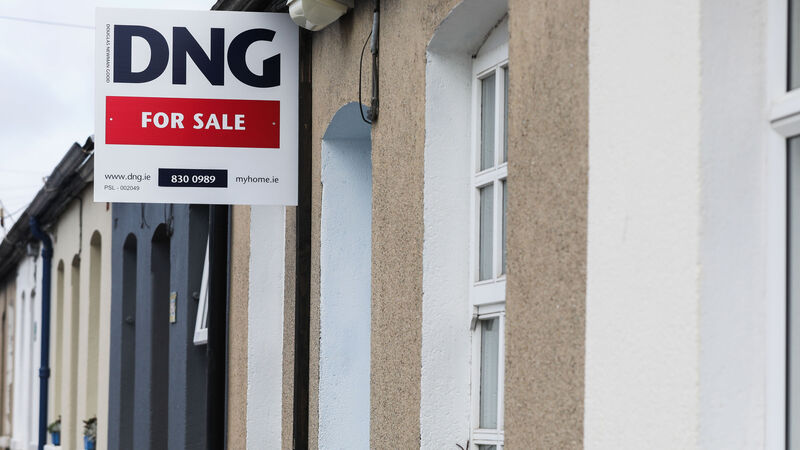House prices rises slowed in 2023 due to lack of secondhand supply

Cork City saw prices rise by 3.7% during the year, while prices in Dublin rose 2%. File picture: Leah Farrell / RollingNews.ie
The number of homes for sale in Ireland last year was “dramatically below” pre-covid levels, despite the increased supply of new homes in the country, new analysis has said.
House prices rose by an average of 3.4% in 2023, according to the latest Daft.ie House Price Report. This was the smallest annual increase since 2019.
The average listed price across the country was €320,046 in the last quarter of 2023.
Cork City saw prices rise by 3.7% during the year, while prices in Dublin rose 2%. Prices rose at a faster rate in both Waterford and Limerick cities, at 6.1% and 9% respectively.
Outside the cities, prices were 6.8% higher in Munster and 8.3% higher in Connacht-Ulster in the final quarter of 2023 than a year previously. This formed an east-west divide, where prices are rising far higher in the west of the country than in Leinster.
The price of new homes, however, is far higher, with the median price of a new home standing at €407,500 in the first three quarters of 2023. In Cork, the median price of a new home was €380,000 but stood at €650,000 in south Co Dublin.
Economist at Trinity College Dublin Ronan Lyons, who authored the Daft.ie report, said with the exception of 2019 when prices fell on the back of increasing supply, 2023 saw the smallest increase in house prices for 10 years. Meanwhile, the sharp rise in interest rates also had a significant effect on the market.
“Lack of price growth because there is sufficient supply to meet demand is, by anyone’s measure, a good thing,” he said.
“But lack of price growth when there is scarce supply — simply because it is sufficient to meet weak demand — is less welcome. That seems to be the picture facing the second-hand market in particular at the moment.”
On December 1, 2023, there were just over 11,100 homes for sale in the country. Mr Lyons said this was very low compared to almost any point over the last 15 years.
“But it’s dramatically below, for example, even the pre-covid-19 average. Between 2015 and 2019 — not a period known for abundance of homes for sale — there were on average almost 25,000 homes for sale,” he said.
So, while the number of new homes on the market has increased, the number of second-hand homes has dropped.
This fall in availability, which started in the middle of 2023, can be seen in all major regions of the country but is proportionally largest in Dublin, where the number of homes on the market is down 33% on the year before.
In a separate survey of prospective homebuyers, roughly half have cited the need to save for an adequate deposit was an issue. Furthermore, a lack of homes was cited by two-thirds of people as the reason they were delaying buying a home.
Mr Lyons said looking ahead to 2024, the key question will be how the second-hand market performs this year.
“The construction of new homes has improved dramatically over the past five years and looks set to continue into 2024 and potentially 2025.
“However, the second-hand market remains critical to the overall health of the housing system. If uncertainty continues to fade, and potentially interest rates start to fall again, it may be the case that 2024 sees the second-hand market recover.
"This would likely mean a healthier housing market than for some time, with transactions up but prices largely stable.”









